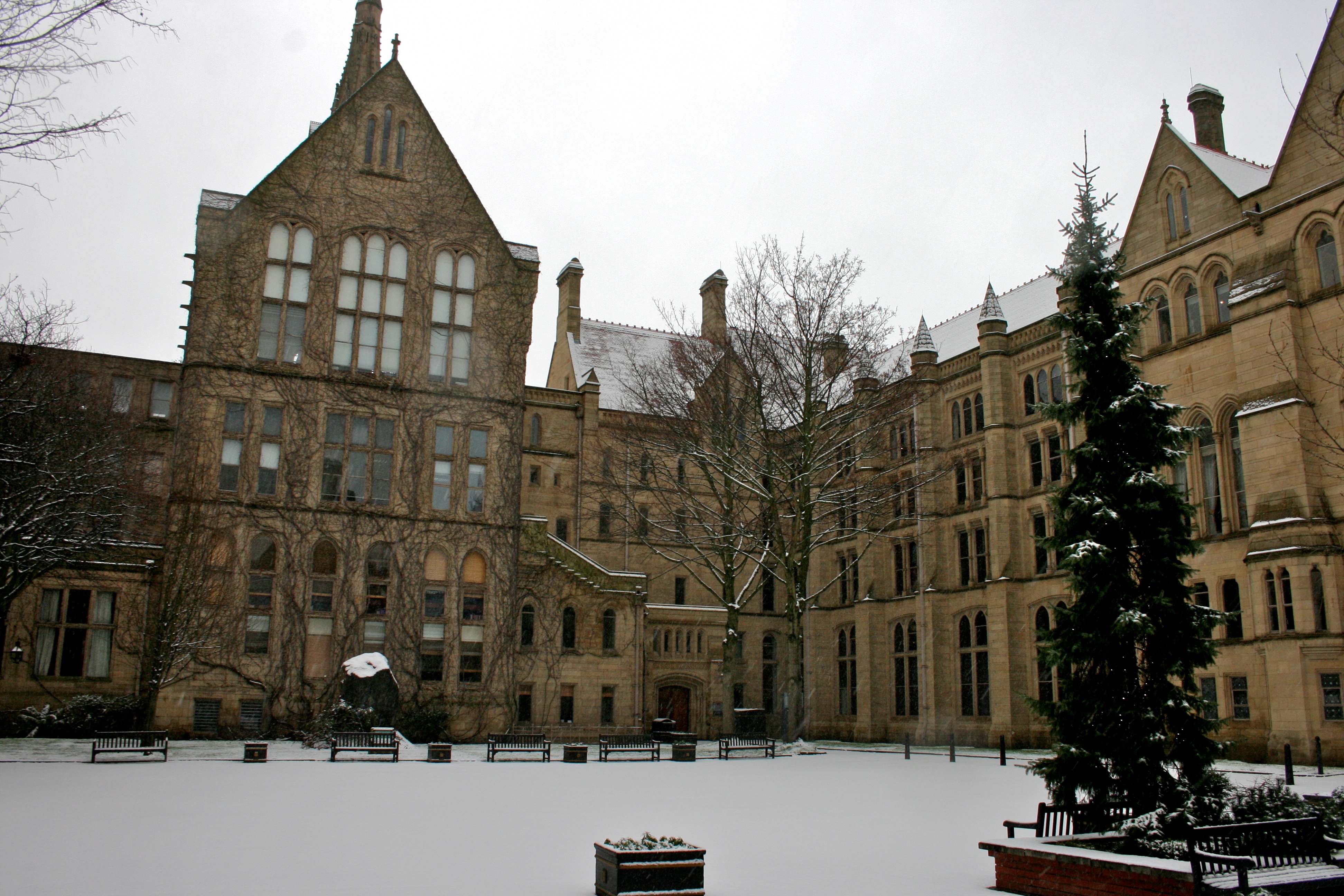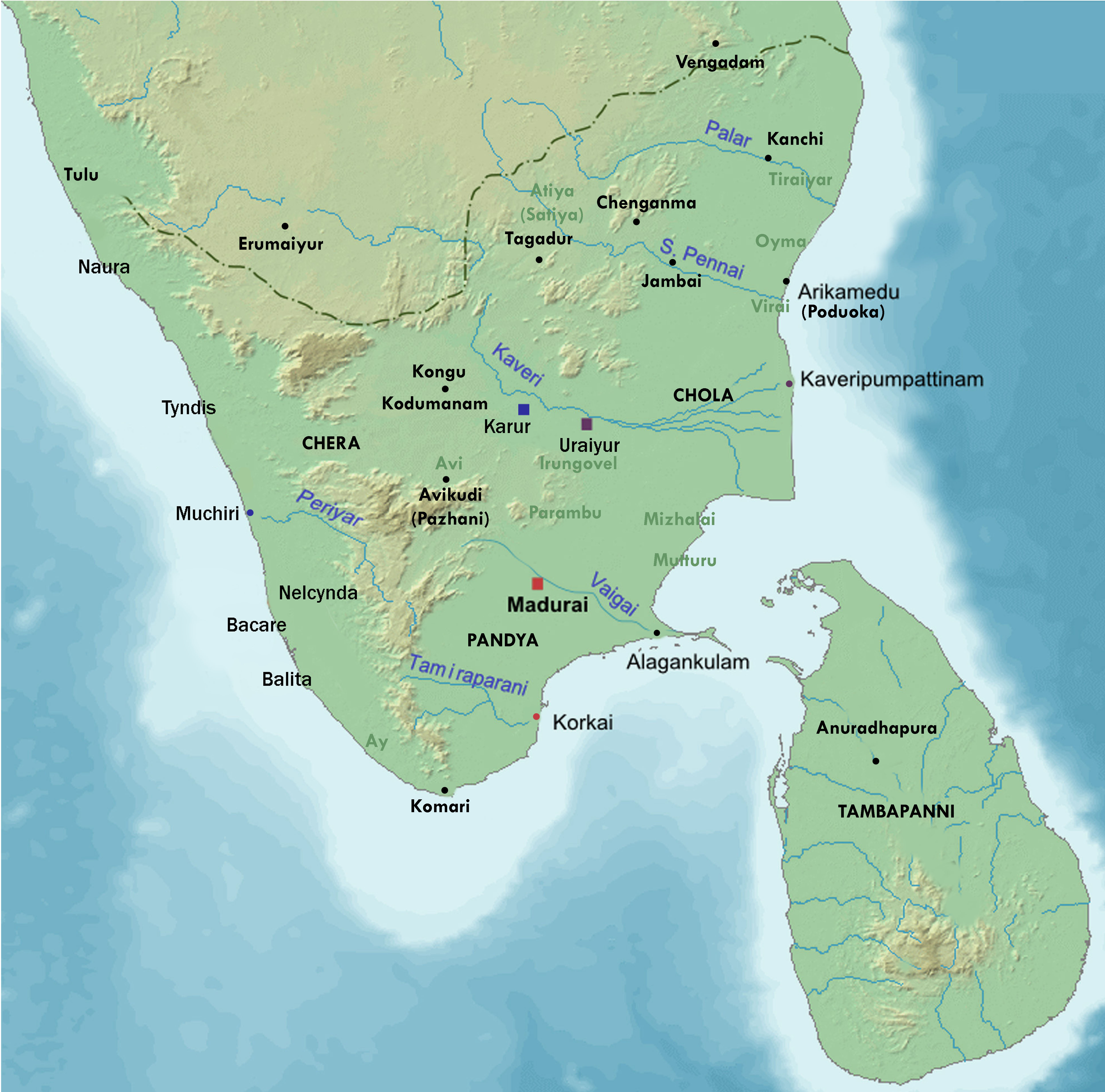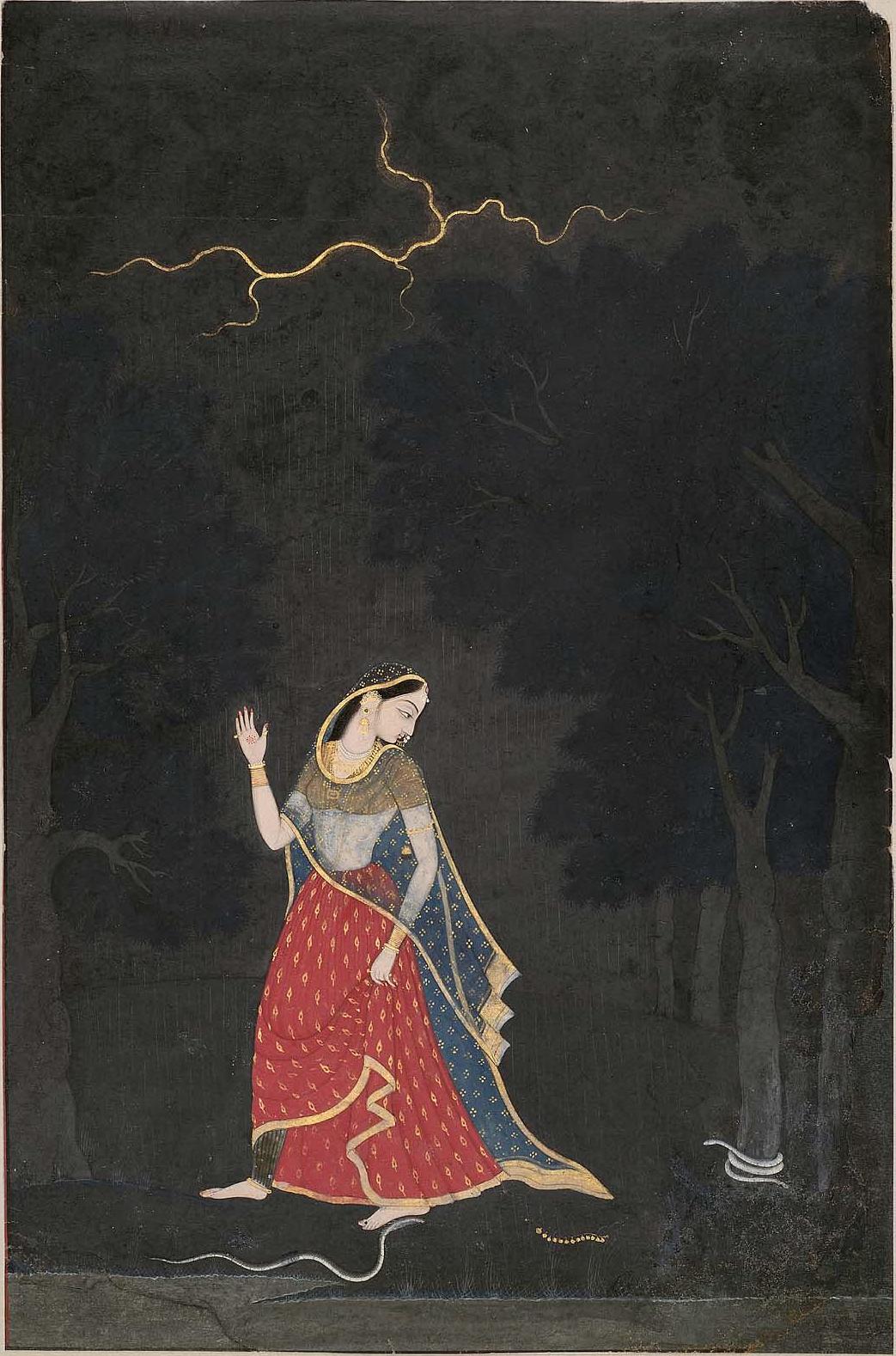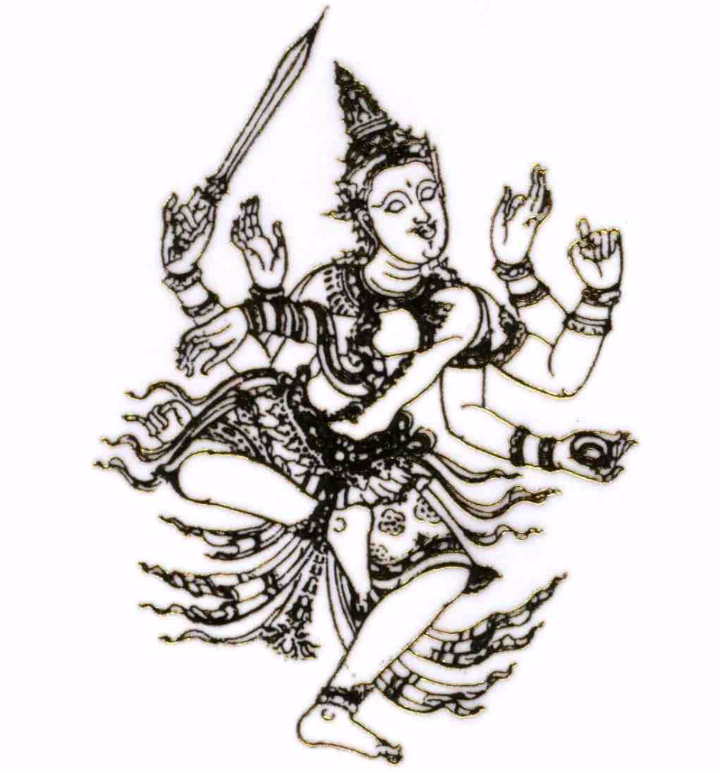|
Kanak Rele
Kanak Rele (11 June 1937 – 22 February 2023) was an Indian dancer, choreographer, and academic best known as an exponent of Mohiniyattam. She was the founder-director of the Nalanda Dance Research Centre and the founder-principal of the Nalanda Nritya Kala Mahavidyalaya in Mumbai. Early life and education Born in Gujarat on 11 June 1937, Rele spent a part of her childhood in Santiniketan and in Kolkata with her uncle. At Santiniketan she had the opportunity to watch Kathakali and Mohiniyattam performances, which she claimed helped shape her artistic sensibilities. Rele was a qualified lawyer with an LL.B. from the Government Law College, Mumbai and a diploma in international law from the University of Manchester. She also held a PhD in dance from the University of Mumbai. Rele and her husband Yatindra had one son. She died in Mumbai on 22 February 2023. Mohiniyattam artiste Rele was also a Kathakali artiste having been trained under Guru "Panchali" Karunakara Panicke ... [...More Info...] [...Related Items...] OR: [Wikipedia] [Google] [Baidu] |
Gujarat
Gujarat (, ) is a state along the western coast of India. Its coastline of about is the longest in the country, most of which lies on the Kathiawar peninsula. Gujarat is the fifth-largest Indian state by area, covering some ; and the ninth-most populous state, with a population of 60.4 million. It is bordered by Rajasthan to the northeast, Dadra and Nagar Haveli and Daman and Diu to the south, Maharashtra to the southeast, Madhya Pradesh to the east, and the Arabian Sea and the Pakistani province of Sindh to the west. Gujarat's capital city is Gandhinagar, while its largest city is Ahmedabad. The Gujaratis are indigenous to the state and their language, Gujarati, is the state's official language. The state encompasses 23 sites of the ancient Indus Valley civilisation (more than any other state). The most important sites are Lothal (the world's first dry dock), Dholavira (the fifth largest site), and Gola Dhoro (where 5 uncommon seals were found). Lothal ... [...More Info...] [...Related Items...] OR: [Wikipedia] [Google] [Baidu] |
University Of Manchester
The University of Manchester is a public university, public research university in Manchester, England. The main campus is south of Manchester city centre, Manchester City Centre on Wilmslow Road, Oxford Road. The university owns and operates major cultural assets such as the Manchester Museum, The Whitworth art gallery, the John Rylands Library, the Tabley House, Tabley House Collection and the Jodrell Bank Observatory—a UNESCO World Heritage Site. The University of Manchester is considered a red brick university, a product of the civic university movement of the late 19th century. The current University of Manchester was formed in 2004 following the merger of the University of Manchester Institute of Science and Technology (UMIST) and the Victoria University of Manchester. This followed a century of the two institutions working closely with one another. The University of Manchester Institute of Science and Technology was founded in 1824 as the Manchester Mechanics' Institute, ... [...More Info...] [...Related Items...] OR: [Wikipedia] [Google] [Baidu] |
Kavalam Narayana Panicker
Kavalam Narayana Panicker (1 May 1928 – 26 June 2016) was an Indian dramatist, theatre director, and poet. He has written over 26 Malayalam plays, many adapted from classical Sanskrit drama and Shakespeare, notably Kalidasa's ''Vikramorvasiyam'' (1981, 1996), ''Shakuntalam'' (1982), Bhasa's ''Madhyamavyayogam'' (1979), ''Karnabharam'' (1984, 2001), ''Uru Bhangam'' (1988), ''Swapnavasavadattam'', and ''Dootavakyam'' (1996). He was the founder director of theatre troupe, Sopanam, which led to the foundation of Bhashabharati: Centre for Performing Arts, Training and Research, in Trivandrum. He was awarded the Sangeet Natak Akademi Award for Direction in 1983 by Sangeet Natak Akademi, and its highest award for lifetime achievement, the Sangeet Natak Akademi Fellowship in 2002. In 2007, he was awarded the Padma Bhushan in the field of Arts, by the Government of India. He died in his residence on 26 June 2016, aged 88, a few days after returning from the hospital. Early life ... [...More Info...] [...Related Items...] OR: [Wikipedia] [Google] [Baidu] |
Malayalam Poetry
Malayalam poetry is poetry written, spoken, or composed in Modern, as well as Old and Classical, Malayalam. History The history of Malayalam poetry dates back to the 12th century; the earliest poetic work in a near-Malayalam language, or what might be a mixture of Tamil and Malayalam, is the ''Rama Charitam.'' Meter There are two types of meters used in Malayalam poetry, also known as Kavita: the classical Sanskrit Sanskrit (; attributively , ; nominalization, nominally , , ) is a classical language belonging to the Indo-Aryan languages, Indo-Aryan branch of the Indo-European languages. It arose in South Asia after its predecessor languages had Trans-cul ...-based and Tamil-based ones. Sanskrit meters are primarily based on trisyllabic feet. The short sound is called a laghu, a long sound is called a guru. A guru is twice as long as a laghu. A guru is usually represented by a '-–' and a laghu by a '⌣'. For easy specification of meters, the laghu's and guru's are ... [...More Info...] [...Related Items...] OR: [Wikipedia] [Google] [Baidu] |
Swapnavasavadattam
''Svapnavasavadattam'' ( sa, स्वप्नवासवदत्तम्, ) (English: ''The dream of Vasavadatta'') is a Sanskrit play in six acts written by the ancient Indian poet Bhāsa. The plot of the drama is drawn from the romantic narratives about the kaushambi king Udayana and Vasavadatta, the daughter of Pradyota, the ruler of Avanti, which were current in the poet's time and which seem to have captivated popular imagination. The main theme of the drama is the sorrow of Udayana for his queen Vasavadatta, believed by him to have perished in a fire, which was actually a rumour spread by Yaugandharayana, a minister of Udayana to compel his king to marry Padmavati, the daughter of the king of Magadha. It forms, in context, a continuation of his another drama, '' Pratijnayaugandharayana''. Background The complete text of the ''Svapnavasavadattam'' was long lost until it was discovered by Indian scholar T. Ganapati Sastri in Kerala in 1912. Characters The main charac ... [...More Info...] [...Related Items...] OR: [Wikipedia] [Google] [Baidu] |
Silappadikaram
''Cilappatikāram'' ( ta, சிலப்பதிகாரம் ml, ചിലപ്പതികാരം,IPA: ʧiləppət̪ikɑːrəm, ''lit.'' "the Tale of an Anklet"), also referred to as ''Silappathikaram'' or ''Silappatikaram'', is the earliest Tamil epic. It is a poem of 5,730 lines in almost entirely ''akaval'' (''aciriyam'') meter. The epic is a tragic love story of an ordinary couple, Kannaki and her husband Kovalan. The ''Silappathikaram'' has more ancient roots in the Tamil bardic tradition, as Kannaki and other characters of the story are mentioned or alluded to in the Sangam literature such as in the ''Naṟṟiṇai'' and later texts such as the ''Kovalam Katai''. It is attributed to a prince-turned-monk Iḷaṅkõ Aṭikaḷ, and was probably composed in the 5th or 6th century CE. The ''Silappatikaram'' is set in a flourishing seaport city of the early Chola kingdom. Kannaki and Kovalan are a newly married couple, in love, and living in bliss. Over time, Ko ... [...More Info...] [...Related Items...] OR: [Wikipedia] [Google] [Baidu] |
Kubja Vishnuvardhana
Kubja Vishnuvardhana I "Vishama-Siddhi" also known as Bittarasa (reigned 624–641 AD) was the brother of Chalukya Pulakeshin II. Vishnuvardhana I ruled the Vengi territories in eastern Andhra Pradesh as the viceroy under Pulakeshin II from around 615 AD. Eventually, Vishnuvardhana declared his independence and started the Eastern Chalukya dynasty (c. 624) AD. The Eastern Chalukyas ruled the Vengi kingdom for nearly five centuries and had a very close relationship with the imperial Cholas. Origin of Eastern Chalukyas Pulakeshin II (608–644), the greatest Vatapi Chalukya king, conquered the eastern Deccan, corresponding the coastal districts of Andhra Pradesh 616, defeating the remnants of the Vishnukundina kingdom. He appointed his brother Kubja Vishnuvardhana as Viceroy. On the death of Pulakeshin II, the Vengi viceroyalty developed into an independent kingdom. Eastern Chalukyas of Vengi outlived the main Vatapi dynasty by many generations. Possible reason for the par ... [...More Info...] [...Related Items...] OR: [Wikipedia] [Google] [Baidu] |
Nayika
The Ashta-Nayika is a collective name for eight types of ''nayika''s or heroines as classified by Bharata in his Sanskrit treatise on performing arts - ''Natya Shastra''. The eight nayikas represent eight different states (''avastha'') in relationship to her hero or ''nayaka''. As archetypal states of the romantic heroine, it has been used as theme in Indian painting, literature, sculpture as well as Indian classical dance and music. Nayikas As per Ashta Nayika, there are eight nayikas. History and cultural depictions The Ashta-Nayika classification (''nayika-bheda'') first appears in ''Natya Shastra'' (24.210-11), a key Sanskrit treatise on Indian performing arts, authored by Bharata (dated between 2nd century BC and 2nd century AD). The classification is detailed in later works like the ''Dasarupaka'' (10th century), ''Sahityadarpana'' (14th century) and various other treatises on poetics as well as erotic ''Kamashastra'' texts like Kuttanimata (8th-9th century) based ... [...More Info...] [...Related Items...] OR: [Wikipedia] [Google] [Baidu] |
Balarama Bharatam
Balarama Bharatam is a Sanskrit treatise on natyam. The author was the king of Travancore (1724–1798), known by the title ' Dharma Raja' or "the king of righteousness". The full name of the king was Karthika Thirunal Bala Rama Varma and he was the Maharajah of Travancore from 1758 until his death in 1798. Being a scholar of music and dance and natyasastra, he compiled this treatise on natyasastra following the fundamental principles laid down by Bharatamuni in Natyasastra and Nadikeshwara in Natyadarpanam, He also considered the contents in Bhavaprakasanam of Saradatanaya. The treatise 'Balarama Bharatam' is not a simple compilation of earlier texts. It is an extension of the earlier sastras with adaptation to contemporary contexts. Being an aspirant and reformer of Kathakali, he brought in several novel ideas of action, dramaturgy and theatrics in his classic treatise. References {{reflist Further reading Dr.V.S. Sharma, 'Balarama Bharatam' with commentary. Sanskrit texts< ... [...More Info...] [...Related Items...] OR: [Wikipedia] [Google] [Baidu] |
Natya Shastra
The ''Nāṭya Śāstra'' (, ''Nāṭyaśāstra'') is a Sanskrit treatise on the performing arts. The text is attributed to sage Bharata Muni, and its first complete compilation is dated to between 200 BCE and 200 CE, but estimates vary between 500 BCE and 500 CE. The text consists of 36 chapters with a cumulative total of 6000 poetic verses describing performance arts. The subjects covered by the treatise include dramatic composition, structure of a play and the construction of a stage to host it, genres of acting, body movements, make up and costumes, role and goals of an art director, the musical scales, musical instruments and the integration of music with art performance. The ''Nāṭya Śāstra'' is notable as an ancient encyclopedic treatise on the arts, one which has influenced dance, music and literary traditions in India. It is also notable for its aesthetic "Rasa" theory, which asserts that entertainment is a desired effect of performance arts but not ... [...More Info...] [...Related Items...] OR: [Wikipedia] [Google] [Baidu] |
Kerala
Kerala ( ; ) is a state on the Malabar Coast of India. It was formed on 1 November 1956, following the passage of the States Reorganisation Act, by combining Malayalam-speaking regions of the erstwhile regions of Cochin, Malabar, South Canara, and Thiruvithamkoor. Spread over , Kerala is the 21st largest Indian state by area. It is bordered by Karnataka to the north and northeast, Tamil Nadu to the east and south, and the Lakshadweep Sea to the west. With 33 million inhabitants as per the 2011 census, Kerala is the 13th-largest Indian state by population. It is divided into 14 districts with the capital being Thiruvananthapuram. Malayalam is the most widely spoken language and is also the official language of the state. The Chera dynasty was the first prominent kingdom based in Kerala. The Ay kingdom in the deep south and the Ezhimala kingdom in the north formed the other kingdoms in the early years of the Common Era (CE). The region had been a prominent spice exp ... [...More Info...] [...Related Items...] OR: [Wikipedia] [Google] [Baidu] |





